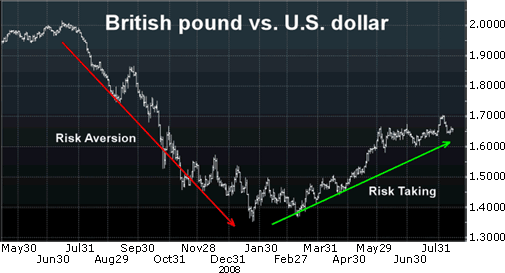MUMBAI, India, Aug 07, 2009 (PR Newswire Europe via COMTEX) --
Bombay Stock Exchange Limited (BSE), today decided to take a 15% stake in United Stock Exchange (USE). USE, which will operate as a BSE Group Company, now brings together a consortium of key stakeholders - the exchange, banks, financial institutions - to drive the development and growth of the currency and interest rate derivatives markets.
Currency futures have been trading actively for the past year, however the market is still at a very nascent stage. USE's efforts will be focused on increasing the participants in this market, as well as the liquidity and the range of tradable products.
With prior regulatory approval, USE will also launch interest rate futures. Interest rates touch every economic agent, from the largest financial institution to a family with a home loan. New products are expected to be launched in the coming years to help market participants manage their interest rate risks. USE will provide an advanced trading platform for these products and will be an important driver of innovation in terms of product and market development.
Commenting on the development, Mr. Jagdish Capoor, Chairman, BSE, said, "Events in recent years have demonstrated the desirability of exchange traded products. We at BSE are committed to working with regulators and market participants to forge the development of trading platforms that facilitate price discovery in a transparent manner. We are happy to be joining hands with the largest banks, end-users and trading entities to drive development of this market."
Mr. T S Narayanasami, Managing Director & CEO, USE added "By partnering with India's premier exchange, we will significantly strengthen our offering and broaden our reach. BSE has an established regulatory structure, and strong distribution and exchange technology that will help us accelerate our plans to be a dominant player in the currency and interest rate derivatives market in India."
"BSE's commitment to thought-leadership, innovation and our belief in the consortium model as a powerful approach for long-term market development were the key factors to enter into this relationship. The BSE Group will work with all the different constituents to drive product and market development in currency and interest rate derivatives markets," said Mr. Madhu Kannan, Managing Director & CEO, BSE Ltd.
About Bombay Stock Exchange:
Bombay Stock Exchange is one of India's leading exchange groups and has played a pre-eminent role in the development of the Indian capital market. BSE is a corporatised and demutualised entity, with a broad shareholder-base which includes two leading global exchanges, Deutsche Borse and Singapore Exchange as strategic partners.
BSE provides an efficient and transparent market for trading in equity, debt instruments and derivatives. It also provides a host of other services to capital market participants including risk management, clearing, settlement, market data services and training. It has a global reach with customers around the world and a nation-wide presence. BSE systems and processes are designed to safeguard market integrity, support the growth of the market in India, and stimulate innovation and competition across all market segments. The BSE Training Institute is at the forefront of educating market participants on currency and interest rate derivatives.
About United Stock Exchange of India:
The United Stock Exchange of India Limited (USE) is India's newest stock exchange for trading in financial derivatives.
The exchange is a unique Public-Private partnership with equity investments by both PSUs and the private sector. USE has 16 of the most respected names in Indian business and finance as consortium members - Allahabad Bank, Andhra Bank, Bank of Baroda, Bank of India, Canara Bank, Federal Bank, HDFC Bank, Indian Overseas Bank, Indian Potash, Jaypee Capital, MMTC, Oriental Bank of Commerce, Punjab National Bank, Tata Consultancy Services Union Bank and United Bank. These 16 institutions not only form the financial backbone of the exchange but also epitomize the integrity, impeccable standards, and values upon which USE stands.

































